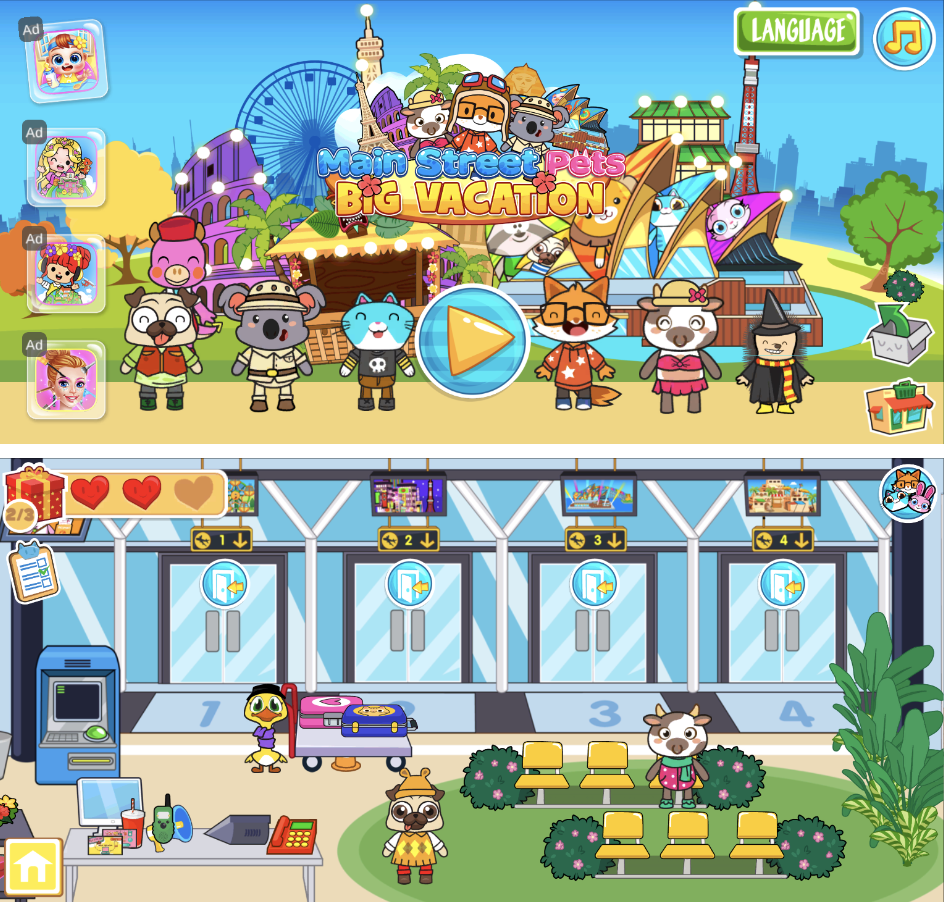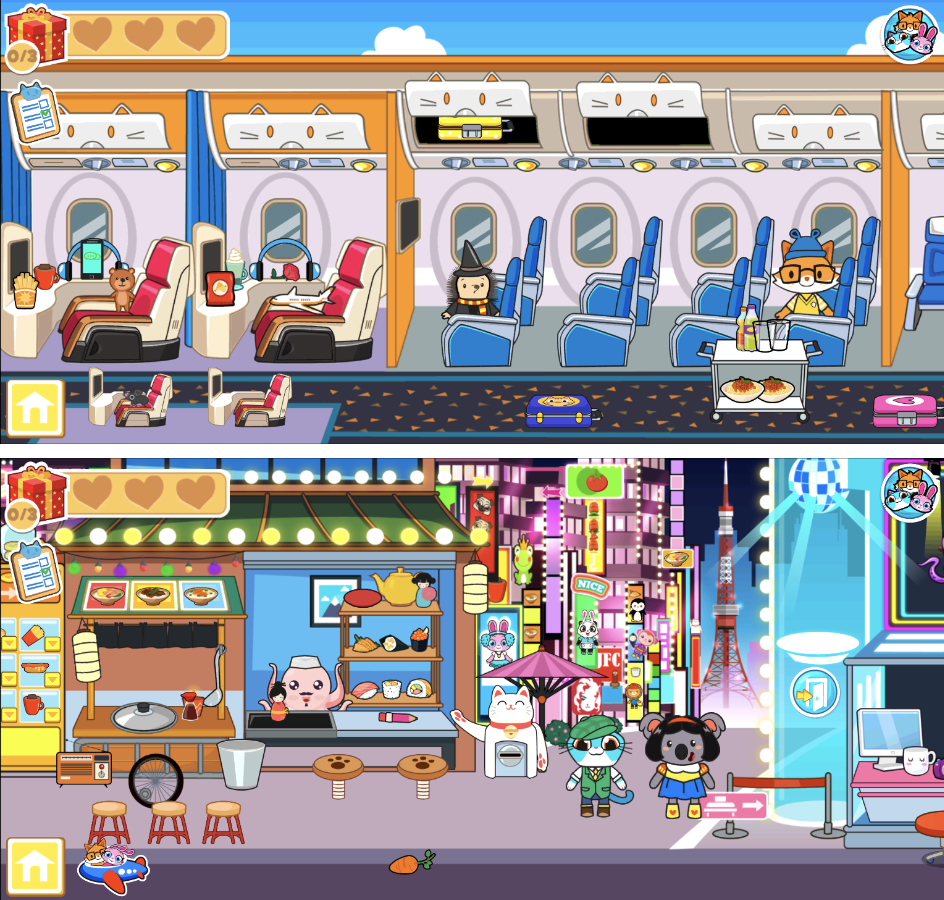
Welcome to Pixalate’s CTV & Mobile App Manual Reviews According to COPPA, a series containing the detailed factors the Trust & Safety Advisory Board educators used to assess an app’s child-directedness.
The educators manually review thousands of mobile apps available in the Google Play & Apple App Stores as well as connected TV (CTV) apps from the Roku Channel Store and Amazon Fire TV App Store using the COPPA Rule factors shown below & make those results available to the public at ratings.pixalate.com.
This post takes a look at a game which is available from the Google Play Store & Apple App Store. Our reviewer discusses how the subjective factors set forth in the COPPA Rule apply to the app and factor into the reviewer's determination as to whether the app is child-directed or general audience (i.e., it is not targeting children).
The teacher will indicate the factors they relied upon in their assessment using the 10 factors shown below that reflect the 10 child-directed factors in the COPPA Rule.

Main Street Pets Big Vacation is a virtual dollhouse game that features adorable animals as the main characters. Players can choose from lions, koalas, foxes, cats, and numerous other animals wearing a variety of different clothing items. They can take their chosen characters all around the airport- through security, to cafes for a snack, and to their gate. Once at the gate they can board the plane and travel to seven different destinations. Some of the destinations are more ambiguous, like an amusement park, but others are real places. However, these real places are a bit exaggerated, such as traveling to Italy where you can see the Leaning Tower of Pisa right in front of the Colosseum. Each destination has many things to interact with, such as hotels, famous landmarks, museums, and restaurants.
and
The artistic style of this app is very appealing to children. The animal characters seem like something you would find in a children’s book or TV show, with human characteristics and bright colors. The airport and objects fit in with this style and are exactly what you would expect from a children’s game.
Most of the app is static, with the user moving around and controlling the characters. There are a few small animations when certain items are interacted with, such as the plane taking off or cash coming out of an ATM. These small animations are just enough to keep children engaged and could even be considered an incentive to keep clicking around and interacting with the app.
Many objects make sound effects when interacted with, such as tickets printing, planes taking off, phones ringing, and even toilets flushing. Playful and child-like music plays in the background on a loop.
There is a several-page long list of tasks to complete in the different scenes, such as making a coffee, putting on an oxygen mask, or napping in a hotel bed. Completing the various tasks earns new items that can be interacted with in the game, such as toys, clothing/accessories, and food. These incentives can give a purpose to the game for older children but are not necessary to enjoy the game. Younger children who cannot read these tasks are still able to enjoy playing without setting out to complete a specific task. They would likely complete many of them at random when playing as the tasks are just interacting with specific objects in the game.
There is a lot of written language considering this is a children’s app, but language is simple and many elementary-aged students would be able to decode it. Reading the instructions is also not necessary to interact with the game. The majority of the written language is associated with the tasks. Many children will not be bothered by completing tasks and will allow their imagination to guide them when playing with this app.
There are several icons on the home screen advertising other child-directed apps by the same developer, as well as a pop-up that must be closed before being able to press the start button. There are also sporadic video ads for other child-directed apps.
and
While there is no specific mention of children in the app description there are a few keywords that do imply that children are the targeted audience. Phrases such as, “Engaging your Pretend Play & Creativity!” in the Google Play Store and the mention of animal “friends” such as “Pudgy the Panda, and Sly the Fox” in both app descriptions reflect an appeal to children to download the app.
Reviews reflect that children are the primary users of this app. There are numerous reviews written by children, as well as reviews written by parents. There is a wide range of ages that seem to enjoy this app, from toddlers up to ten-year-olds.
Privacy
According to the privacy policy, which does not have a publication date listed, the developers do not collect any personally identifiable information. They state, “Our apps have been designed with the guidelines of the United States Federal Trade Commission (FTC) in mind, as expressed in the Children's Online Privacy Protection rule (COPPA), and strive to meet all duties and obligations under the rule of law.” While they do not collect precise locations, they do indicate that they collect broader location data for “App functionality, Analytics, Advertising & Marketing, Fraud Prevention and Security as well as compliance.” They indicate that they do not use targeted advertising and their advertisement partner is also COPPA compliant.
Find Pixalate's full catalogue of reviews in our CTV and Mobile App Review Page
Screenshots of Main Street Pets Big Vacation


Pixalate’s Trust and Safety Advisory Board was created to bring in individuals with experience using child-directed apps in the classroom to review and assess which apps are child-directed. This manual review process serves to quality check Pixalate’s automated review process. See our full methodology for more information.
Disclaimer
This blog post published by Pixalate is available for informational purposes only and is not considered legal advice. By viewing this blog post, the reader understands and agrees that there is no attorney-client relationship between the reader and the blog publisher. The blog should not be used as a substitute for legal advice from a licensed professional attorney in the applicable jurisdiction(s), and readers are urged to consult their own legal counsel on any specific legal questions concerning any specific situation. The content of this blog post reflects Pixalate's opinions with respect to factors that Pixalate believes may be useful to the digital media industry. Pixalate's opinions are just that, opinions, which means that they are neither facts nor guarantees; and this blog post is not intended to impugn the standing or reputation of any entity, person or app, but instead, to report findings pertaining to mobile and Connected TV (CTV) apps.
*By entering your email address and clicking Subscribe, you are agreeing to our Terms of Use and Privacy Policy.
These Stories on Mobile
*By entering your email address and clicking Subscribe, you are agreeing to our Terms of Use and Privacy Policy.

Disclaimer: The content of this page reflects Pixalate’s opinions with respect to the factors that Pixalate believes can be useful to the digital media industry. Any proprietary data shared is grounded in Pixalate’s proprietary technology and analytics, which Pixalate is continuously evaluating and updating. Any references to outside sources should not be construed as endorsements. Pixalate’s opinions are just that - opinion, not facts or guarantees.
Per the MRC, “'Fraud' is not intended to represent fraud as defined in various laws, statutes and ordinances or as conventionally used in U.S. Court or other legal proceedings, but rather a custom definition strictly for advertising measurement purposes. Also per the MRC, “‘Invalid Traffic’ is defined generally as traffic that does not meet certain ad serving quality or completeness criteria, or otherwise does not represent legitimate ad traffic that should be included in measurement counts. Among the reasons why ad traffic may be deemed invalid is it is a result of non-human traffic (spiders, bots, etc.), or activity designed to produce fraudulent traffic.”

